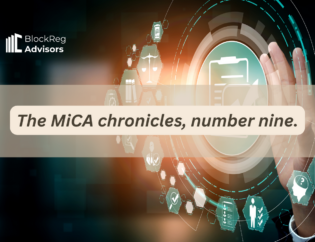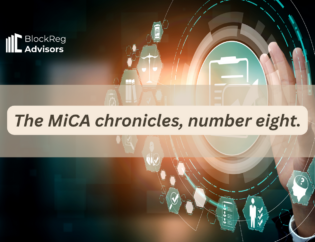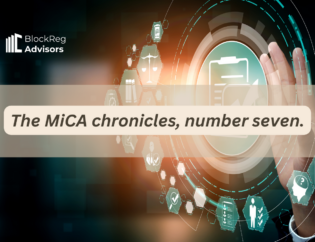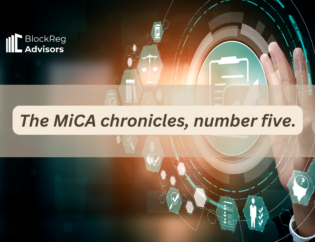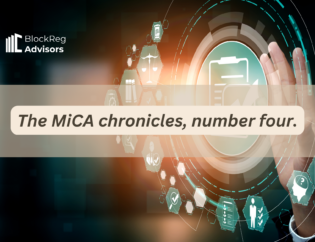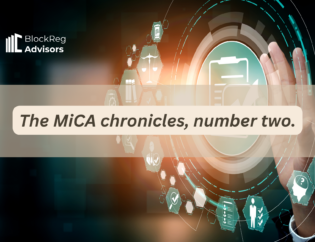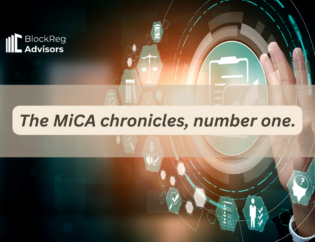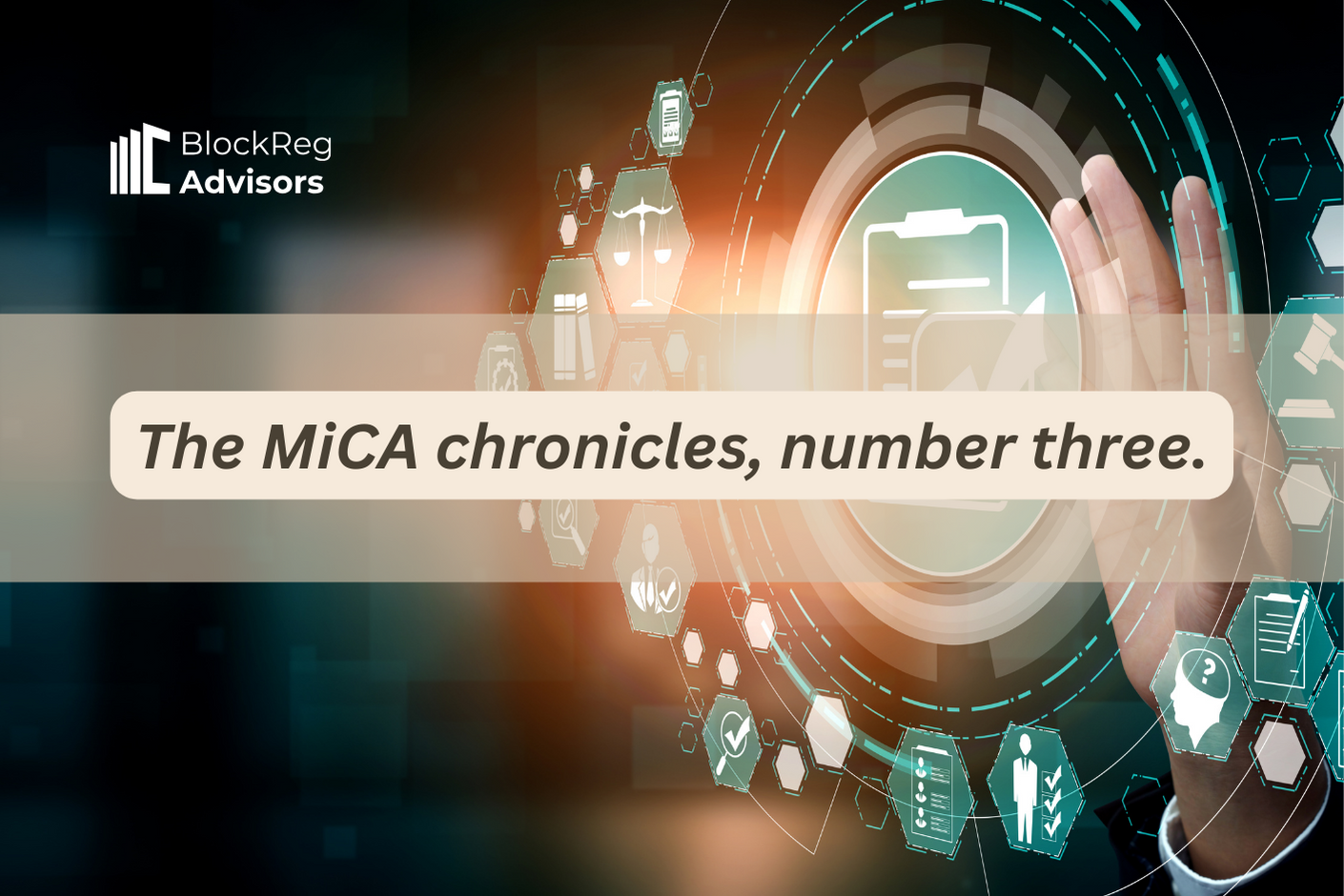

Law, literature, and opinions: the role of legal opinions in ART issuance
When I told my mother I wanted to become a lawyer, following the footsteps of my older brothers, father, grandfather, cousins, aunts, and – whisper it – hers, let me say that the reaction was not very enthusiastic. “Could you not think of anything better to study, something more useful and interesting? Law is so boring…”. This statement confused me, since my mother always said publicly (meaning: to people other than me) that law was a great university degree to have, that it would provide students with the intellectual tools necessary for success in the world, and that being a lawyer was a noble profession.
There is a saying that “mothers are always right”. My mother was right – law is boring, in the sense that it is a course, in a very crude sense, about the details of the details of language, the convoluted meanings of very serious and antique words, logical constructions, rhetoric, and, worse of all, it is full of unfinished answers (or, as my professors used to say, “the literature disagrees”). She was also right in saying that the study of law provided its students with a series of intellectual structures that were very helpful in dealing with the crude reality of the world, specifically in terms of risk assessment, pragmatism, and consideration of the many options and solutions available to solve a problem. And, of course, she was definitely right in saying that it was a noble profession, for it helps others navigate the schemes of rules and norms that orientate our public, business and professional lives.
I usually tell my students – I have been teaching first-year law students for six years now – that studying law is akin to studying literature. It is all about words, and about understanding the meaning of those words (and statements, and concepts), with reference to a variety of sources (e.g., social uses, doctrinal studies, jurisprudence, philosophy, psychology…), so that students understand and develop a method of interpreting the rules, in all cases that they are faced with: old rules, new rules, conflicting rules, rules of different legal sources, orders, cultures, etc. Students also have to understand the “dramas” of everyday life to know how rules apply within the system.
However, legal interpretation is different from literary interpretation in the sense that the former has a practical consequence that the latter does not. A subject of the law shall apply the rule (it shall follow or make others follow, sometimes with recourse to force) according to what is considered the right meaning of the norm. This application is what moulds social order, and eventually guarantees it. Knowing what the legal meaning of a rule is sets the line between knowing whether a certain action is licit or illicit, legal, or illegal, and therefore subject to the negative judgement of government institutions responsible for maintaining law and order.
A lawyer, therefore, is someone whose work consists, essentially, in advising on the best interpretation of the rules, and supporting people that require legal support for their affairs, be those a contract negotiation, the licensing of a business, or the settlement of a dispute. Maybe a lawyer is not as cool as a professor of literature, and it is difficult to argue that the books of law (statutes, doctrine, jurisprudence, among others) are as interesting as literary works. Nevertheless, while literary books can change your life, fulfil your imagination and make you look at things differently, the law is the force that glues the peace and order of a society together, and a lawyer an important (even if sometimes expensive or complicated fellow, particularly if he or she is fond of literature) piece in helping such orderly system to work.
A lot of these “existential” ideas concerning my profession and life came to mind when I was reading MiCA, and in particular the rules on the issuance of asset-reference tokens (ARTs) established in articles 17(1) b), point ii), and 18(2) e). According to these provisions, an entity requesting permission to issue an ART with a National Competent Authority (NCA) must present in its request, among other things, a legal opinion stating that the token to be issued cannot be considered a crypto-asset excluded from the application of MiCA rules (excluded token), nor an e-money token (EMT).
These provisions, as far as my knowledge goes, do not have any parallel with other EU rules on banking and financial products, although there is some practice of lawyers submitting, together with licensing requests, legal opinions on the rules applicable to their businesses (but voluntarily, not by legal obligation). Basically, an ART issuer must have a legal opinion – which, without other definition available, can be considered as the opinion of a legal expert (single, like a lawyer or law professor, or collective, like a law firm) which rules should apply, and in what sense, to a certain event – supporting its application, arguing that the tokens do not fall under one of two other categories. This is not a voluntary requirement, but a mandatory criterion that must be complied with for the sake of receiving the authorization to issue an ART.
What these rules show is that a token can be many things, depending on the perspective. One thing is the token that is created, the digital reality itself. That is a technical matter, for the programmers to deal with. Another thing is the token as a “product”, and that is for the entrepreneur to develop. The product is what that token can offer to its subscribers or buyers: it concerns the utility and function of the digital asset. The product is the access the token gives to a service, or to a return, for example.
Finally, a third thing is the “legal” token. The legal token is the token that, considering its characteristics, function and utility – in other words, considering the technical and product details – falls under a specific, pre-established legal category, and is therefore subject to specific rules under that category. Legal categorization, in this sense, is nothing more than a form of transformation, or of naming something within the spectre of law.
It is unclear why MiCA lawmakers decided to insert this criterion. Prospective ART issuers (be them credit institutions under article 17, or other entities under article 18) already have to submit to the NCA the technical details of the token (under the requirement to submit the white paper prepared according to article 19) and the business plan, which will include information on the utility and function of the token. This should be enough to understand if a token is an ART or not. Why then the need for a legal opinion?
One possible answer is that EU lawmakers were so afraid of ART issuances (call it the Libra / Diem trauma…) that, not happy with establishing obligations for ART issuers that are very similar to rules applicable to credit and payment institutions, they decided that extra-requirements should be added to issuance requests. A legal opinion – in which a legal expert advises on the “best” or “correct” an interpretation of the rules – is a way of having a third party that is external to the company providing confirmation on the legal categorization of the token. To be clear, the legal opinion does not say that a token is, in fact, something – lawyers, as far as I am aware, cannot change reality. But they can something similar, for they can argue for the token to fall under a certain legal category given its real characteristics. In other words, what they can do, and what is asked of them here, is to explain how under the reality of law this token should be understood, and therefore support its issuance as such, and declare that it should follow its procedure.
On a second note, I find it interesting that the opinion should be about why the proposed token is not an excluded token nor an EMT, but not why it is an ART. A legal interpreter will, in principle, have to specify first what is an EMT and a token excluded within the terms of article 2(4) and then consider why the proposed token does not correspond to either category (the legal expert may start by saying what the token is too, and after compare with the two other versions, but it seems simpler to argue in the first manner than in the former – and, if I may, it is also a method of argument that is more in line with the spirit of the rule, which is not about proving what the token is, but instead to prove what the token is not).
In abstract, it seems fairly straightforward to make the case that an ART is not an EMT, since an EMT for MiCA is a token that purports to maintain a stable value by referencing just one official currency, while an ART purports to maintain a stable value by referencing things other than official currencies (such as rights, or assets as commodities), or a mix of official currencies and other realities, or just a mix of official currencies (a currency basket). In sum, an EMT is a simpler legal category than an ART, and so it would be easier to prove that the latter is not the former.
The situation with excluded tokens is a bit more complex, and the drafting of MiCA only adds to the confusion. First, MiCA excludes from its application (according to article 2(4)) tokens that are securities (or that represent securities or financial instruments) as well as insurance products from. Therefore, ART that purports to represent a value pegged to a security or a financial instrument will most likely be excluded from MiCA. A different interpretation would be that the token is only maintaining a stable value, and it cannot be thus considered a security per se, but in a way this is a form of tokenization that must be considered in its substance, and it could be argued that it would work in some ways similarly to certain forms of securitization. The problem is that the EU legal concept of security is broad, and it may vary from Member State to Member State, which may create some regulatory arbitrage between jurisdictions. There might some small room for interpretation here, but not much, and it will require from the expert a solid knowledge not only of financial and private law, but also of the technology characteristics of the token and of the product at stake.
Second, there is a list of tokens that are excluded from MiCA in article 2(4), but there are several other types of tokens excluded from MiCA application that are not established in that provision. I discussed some in my last MiCA chronicle on tokenization, such as non-fungible tokens (e.g., tokens representing non-fungible realities). In my view, an ART must also prove that it does not fall within any other of such categories, although by describing the token and the values to which it refers it seems simple, in abstract, to show that an ART is not an NFT. However, the ART definition, as discussed in the first MiCA chronicle, is not completely straightforward, and so it will depend on the NCA, and on EBA and ESMA’s assessment of the legal opinion.
Oh, that is right: in case you are not aware, when an ART issuance is requested, the NCA has to draft a decision, that is then sent to EBA, ESMA and the ECB, with the two first entities having to comment on the legal opinion submitted by the issuer, while the ECB shall provide an opinion on the monetary and financial risks of the token. I am genuinely curious to see how long it will take for the first ART to be issued in Europe.
Back to legal opinions, there is a third issue that concerns me. What about tokens that are not ARTs nor EMTs – the third category covered by MiCA? Why should the legal opinion not discuss if the token falls under this category? I believe that this is another argument – see the previous chronicle on tokenization – for the residual character and little importance of this category, that is much more limited than it seems to be, when one considers all the types of tokens excluded from the application of MiCA. The obligations for issuers of tokens that are not EMTs nor ARTs are nothing compared with the obligations for ART issuers, who have to become financial institutions, subject to strict governance and capital requirements. In other words: tokens that are not EMTs nor ARTs do not matter, and so there is no need to argue that an ART token is not one of such tokens when submitting an issuance request.
The issue of the legal opinion will open, invariably, a new business line for lawyers, but one that must be treaded carefully. After all, when issuing a legal opinion, a lawyer is binding him or herself to that opinion. Since such opinions will be reviewed by EBA and ESMA, it will be necessary for legal experts to have not only a sound and rigorous understanding of the language of law (particularly financial and banking laws, but also the laws of property) and, more importantly, to understand how DLT protocols and tokens (the product and the technology) work, so that they are able to analyse the tokens and, considering the their commercial functions and potential, as well as their technical characteristics, see how such tokens fall or not under the provided regulatory categories. This will be important because it can be a very interesting way for the market to help develop the legal categories established by MiCA, and to promote a sort of technical and legal dialogue with NCA and EU regulators on this matter. Lawyers will then participate actively in the definition of the scope of the MiCA categories for tokens, even if it takes time for the first tokens to be approved to go to the market.
It will be interesting to see how lawyers develop this new form of literature that is the market in crypto-assets, a “final frontier” where several concepts and logics interact to the point of transformation.
Note: This text is the sole work of the author and does not bind BlockReg Advisors Ltd. nor does it constitute legal advice. All rights reserved.
If you want to discuss these topics further do not hesitate in contacting our team at [email protected] and [email protected].
